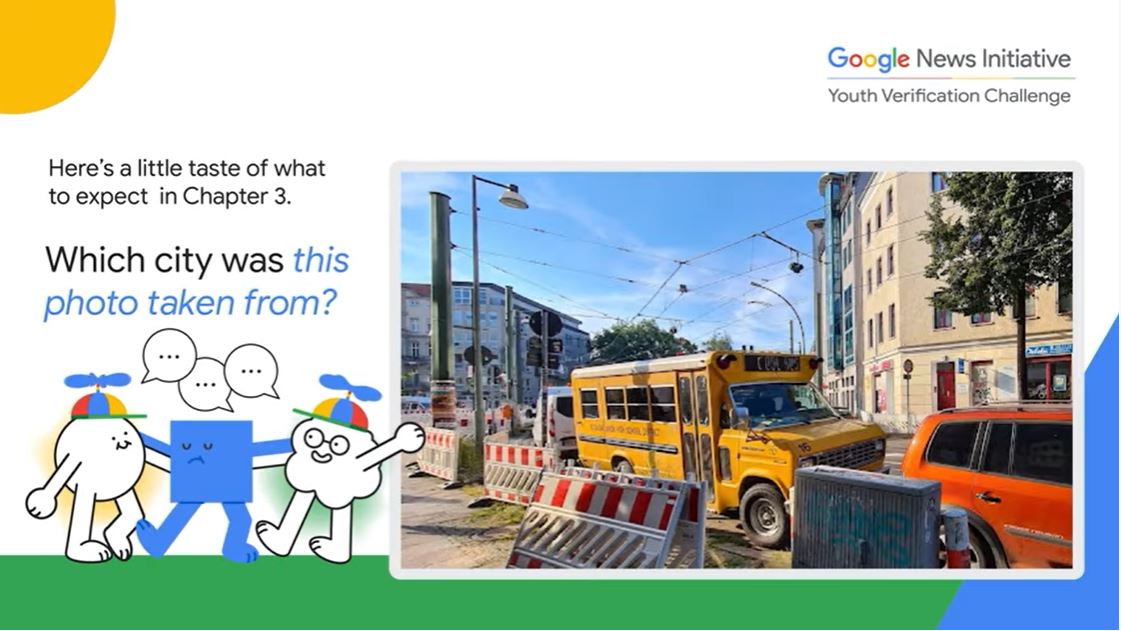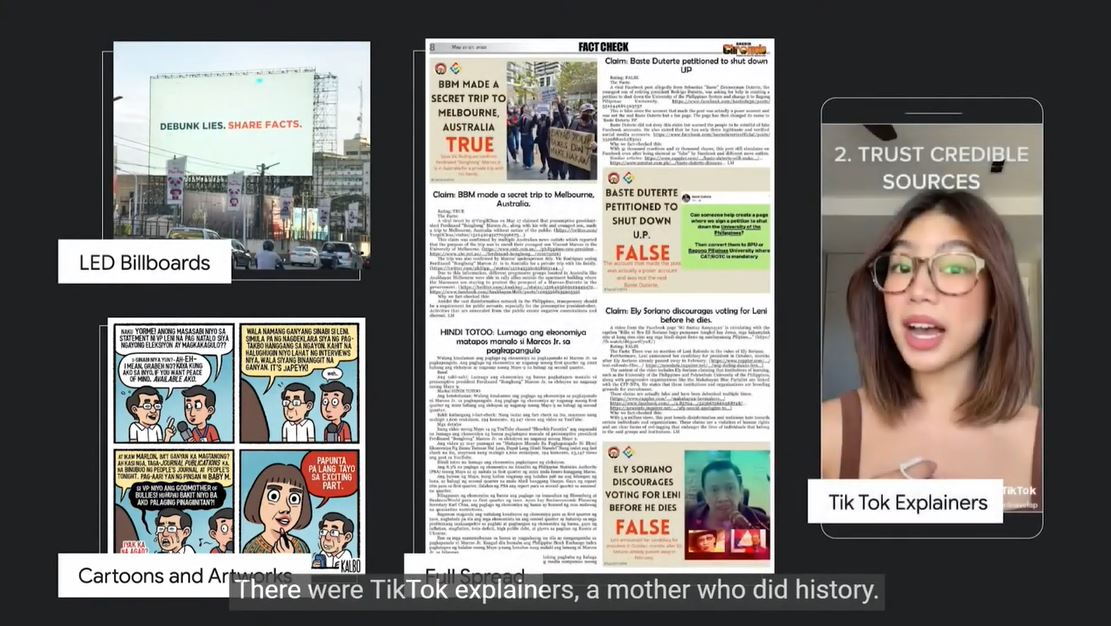
Here is a list of ways how netizens can fact-check and spot fake news from tips shared at the 2022 Google News Initiative APAC Trusted Media Summit.
False or misleading information that is reported in the style of news is widely referred to as “fake news”. These false reports are often aimed at earning money through advertising riding on the virality of the post or intended to harm the reputation of a person or an organization.
Google News Initiative held its 5th annual APAC Trusted Media Summit event on Sept 20-21 with journalists, fact-checkers, educators, researchers, activists, and policymakers from all over the Asia Pacific region coming together to share updates on the best practices in the fields of fact-checking, verification, media literacy, and research.
In the same event, Google News Initiative conducted the culmination of the Youth Verification Challenge which started in April as a series of interactive sessions where young aspiring journalists can gauge and hone their fact-checking skills.
Good News Pilipinas shares everything you need to know about fact-checking as gleaned from the APAC Trusted Media Summit and Youth Verification Challenge:
1 How to Reverse Image Search
There are two types of images used to spread misleading info: altered images and out-of-context images. Altered images are those that are either changed or edited while out-of-context images are actual images that are meant to deceive others by being used with a deceptive statement or remark.
But what specific tools can we utilize to examine such images?
- The most popular tool is the Google Image search. You may simply drag and drop the photos or paste the image URL. With the help of the search results, you may assess if the image is recent, authentic, or recycled by comparing it to other images or online material that could be similar to the one you input.
- You can also use other search engines because each search engine has its own specialties. In addition to Google Image, we also have Yandex, TinEye, and Microsoft Bing.
- Yandex allows you to crop a picture to focus on particular portions of the image, while also allowing you to look for related and similar photos.
- TinEye has numerous factors, including date and image size. Finding recycled images is easy when you order by newest.
- Last is Bing, similar to Yandex, you may also crop the image there. Like TinEye, you can also determine the size and dates of the posting on several sites.

2 How to Reverse Video Search
The fake news creators have also altered and edited original videos. Fake videos come in two types: Deepfake and Cheap fake.
DataandSociety defines “deepfake” as an altered video generated using machine learning to “hybridize or synthesize human bodies and faces” as opposed to a “cheap fake” which is an AV manipulation, made using less expensive, more readily available software.
Basically, there is no quick way to do an easy reverse video search like how you would with a reverse image search. But we still have a tool available to make it easier for you to check videos whether it is real or fake.
The InVid Extension is a plug-in toolkit made to help with fact-checking using video evidence. In addition to other features to aid in content verification, the program offers users contextual information on videos, reverse image searches, video metadata, and video copyright information.
This will enable you to recognize content that has been recycled to create fresh content, a technique that is widely used to spread false information.

3 How to geolocate and timestamp
Location and timeframes are crucial in news and are unfortunately used to disseminate false information.
Google Maps is used to verify places in news or posts. What you do is to look out for signages and establishments in visual uploads and search them on the Maps.
Changes in establishments may be tricky but Google Maps has a feature where you can slide different versions of street views according to the years they are captured.
You will have to be very detail-oriented to spot clues that correlate with the places and innovative in finding out ways to find them.
Another important aspect of fact-checking is the timestamps. You need to identify when the original post was uploaded as content is easily downloaded and reuploaded whenever to inflict chaos by putting them out of context.
A way to do this on social media is by hovering over the time indicated and it will show you the exact time and date when it was uploaded. You may have to take the extra mile by learning time zones when dealing with international sources.
This goes the same with publications and other sites. You can also use the aforementioned InVid extension for easier fact-checking.

4 To Verify News
News fabrication is closely associated with the falsification of photographs and videos. There are 4 ways to determine if a news story is real or not:
- Look at the headline. It’s important to check more than the headline as some publications have headlines that are both catchy and deceptive, giving the impression that sounds clickbait.
- Next, confirm the source and the author. Maintain your skepticism as bogus news websites continue to copy legitimate news websites. A story may be false news if the author is not identified in the byline.
- Next, inspect the date. Usually, there is interesting news to share with others, but the problem is that the news is already outdated and has been taken out of context. Individuals share or circulate news that has already been published which makes others feel it is a brand-new story.
- Lastly, look at how the story is being told. Read the entire article and check if it is objective or not designed to spark an emotional response. There are certain publications you may come across that push you too hard to accept the viewpoint they present.
As a bonus, we share with you two Filipinas who were featured at the global event.
Meeko Angela Camba of VERA Files was a session speaker as a master fact-checker. She shared ways on how their nonprofit online media organization monitors and debunks falsehoods and misleading claims of government officials and other prominent personalities.
@meekocamba of @verafiles entertains questions as master fact-checker at @GoogleNewsInit Youth Verification Challenge.@GoodNewsPinas_ pic.twitter.com/MAOAvlE4eO
— Martina Torres (@martinajoyce_) September 27, 2022

Nobel Peace Prize winner and appointed UN Internet Governance Forum Maria Ressa was the keynote speaker of the global event. Ressa’s ‘Battle for facts’ talk shared how journalism defends our democracy.
The Rappler founder and CEO divulged facts and figures on the violence-stricken reality that women journalists had to endure and how the Marcos propaganda was a perfect example of the battle for facts.
Ressa shared her urgent tip – “Do this early, now.” The battle for facts is majorly influenced by politics and it is happening globally. The multi-awarded journalist encouraged the Summit participants to bring the battle globally, not just domestically.
Fact-checking is both a science and an art, but also a lot of work. It is easy to assume that news is ambiguous but facts set them straight. These are just a few of the things we have to endure as responsible media consumers and citizens of the world.
We must not give in to false information no matter how charming and engaging it may appear. Be a beacon of hope and join this battle for facts.
Report by Martina Torres and EJ Transfiguracion.
WATCH the APAC Trusted Media Summit 2022 here to find out more about fact-checking and spotting fake news:
WATCH: @GoogleNewsInit 's fifth annual Trusted Media Summit APAC 2022 with keynote speakers Nobel Peace Prize winner @mariaressa and @EliotHiggins.
FULL STORY to come via @GoodNewsPinas_ https://t.co/UHlCwjgina
— Martina Torres (@martinajoyce_) September 27, 2022
Good News Pilipinas is a Lasallian Scholarum Awardee. TELL US your good news story tips by messaging GoodNewsPilipinas.com on Facebook, Twitter, Instagram, or e-mail editor@goodnewspilipinas.com and WATCH Good News Pilipinas TV YouTube & Good News Pilipinas TikTok for more Filipino Pride stories!












